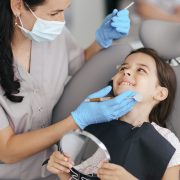What Kinds of Treatments Will a Holistic Orthodontist Use?
A holistic orthodontist in Shaker Heights, OH, will look at a person’s health in context with their mouth instead of considering their oral health alone. This is a somewhat less known branch of dentistry, though it’s certainly enjoyed some popularity after people have seen the results. We’ll look at what kinds of treatments you might find if you’re interested in booking an appointment.
Myofunctional Therapy
Myofunctional therapy relies on your body’s anatomy to strengthen the muscles in your mouth. You may need to do certain types of exercises, such as touching your tongue to your chin or pushing the tongue against a rounded object (e.g., a spoon, etc.).
Expansion
Sometimes, teeth can align on their own if they have enough space. A palatal expansion will use an appliance to widen the jaw, giving teeth more room to adjust. You might need this if you have a crossbite or crowded teeth.
Craniosacral Therapy
This technique focuses on aligning the muscles that connect the head, spine, and pelvis. While this may not sound like orthodontic treatment, the movements can relieve pain or discomfort in the jaw and help align the teeth.
Holistic Orthodontists in Solon, OH
A holistic orthodontist in Solon may not always have the same approach as a traditional orthodontist, but they are no less interested in getting the best results for their patients. If you’re looking for a team that can introduce new techniques that you may be more comfortable with, consider visiting the McGuire Orthodontics and Facial Orthopedics staff. With two locations, we’re here to make your journey as simple and hassle-free as possible. No matter what you’re looking for, whether it’s clear aligners or just a more comfortable bite, we’ll give you enough information to make the right decisions.










